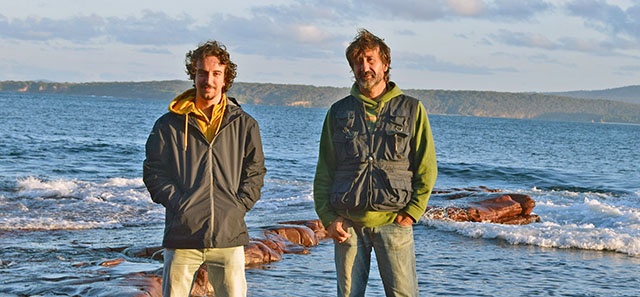Humberto Ferrón and Héctor Botella, researchers from the Cavanilles Institute of Biodiversity and Evolutionary Biology have proved the close relationship between the shape and the arrangement of the scales in the body and the different ways of life of the sharks. The work, published this Monday in the magazine ‘Plos ONE,’ establishes the basis for discovering the way of life of the extinct vertebrates with similar squamation (arrangement of scales) to the current sharks and it is the first step in the creation of a squamation atlas.
The researchers have proved that thelodonts, one of the first known groups of vertebrates, were already very different in ecological terms at the beginning of the evolutionary history of the group. ‘There were species that lived in the deep sea, very active swimmers and even species that swam creating shoals,’ highlights Humberto Ferrón. Other thelodonts have already had scales to prevent the parasitic settlements. This facts suggest, according to the expert, that parasitism and social behaviours in vertebrates already existed during the Silurian period, 400 million years ago.
In order to reach these conclusions, the authors have studied the squamation pattern (shape and arrangement of the scales in the body) in almost one hundred shark species. The use of different morphometric and statistical techniques has allow to describe quantitatively the close relationship between the squamation pattern and the different ways of life of the current sharks.
According to Héctor Botella, ‘sharks, which are more popular due to their big jaw, their sharp teeth or their locomotor or reproductive habits, largely owe their evolutionary success to the phenotypic plasticity of their skin. This has allowed them to control different ocean atmospheres for more than 400 million years.’
‘The skin of a shark is fascinating. It seems smooth but if you zoom in it is a complex structure covered by thousands of small scales,’ according to Botella. The morphology, body distribution and abundance is what gives important information about their way of life. The shape of these scales is closely related to their purpose. For instance, it is possible to distinguish scales involved in the protection against touch, prevention of the anchoring of parasitic in the skin or the reduction of the friction with water.
The authors also show that this information is a useful tool to know how the way of life of the already extinct animals was, in particular in the more ancient vertebrates groups and that it will be interesting for palaeontologists and zoologists.
The conclusions of the research could be implemented in bioengineering since a better knowledge of the skin of these animals can help to develop tools in nautical engineering. According to Héctor Botella, an example would be some swimsuits (which are currently forbidden by the Olympic Committee) that copy the skin of some sharks and that can increase significantly the swimmer speed.
The study published in Plos One, ‘Squamation and ecology of thelodonts,’ also adds information that can be useful in conservationist policies of certain current shark species, whose ecology is unknown, such as the sharks that live in great depths which have been observed on rare occasions in their natural habitat and which are known thanks to captures.
Until the publication of this study, the works about the way of life of the first vertebrates were very limited and most of them were based only on sedimentology data.
This work represents an important part of the doctoral thesis of Humberto Ferrón, directed by Héctor Botella and focused on the study of the way of life of the first vertebrates. The research has been conducted during three years and it has included different filed campaigns as well as visits to collections of sharks and fossils in different Spanish museums (Museu Cau del Tauró de l’Arboç, Tarragona; Natural Sciences Museum of Barcelona, Barcelona; National Museum of Natural Sciences, Madrid) and in international museums as well (Museum für Naturkunde, Berlin; Queensland Museum, Brisbane; National Museum of Scotland and Australian Museum, Sidney.)
Research Group
Humberto Ferrón and Héctor Botella form part of Early Vertebrate Evolution Research group (http://www.evervalencia.es/) which is included in the Cavanilles Institute of Biodiversity and Evolutionary Biology of the Universitat de València. The group studies the origin and early evolution of the first vertebrates, as well as the moment and rhythm of the appearance of the different tissues and skeletal structures. Their research combines traditional palaeontology with studies of comparative anatomy and developmental biology in existent organisms. The study carried by Humberto Ferrón and Héctor Botella has received funding from the Ministry of Economy and Competitiveness, the Valencian Government and the programme SYNTHESYS of the European Union.


